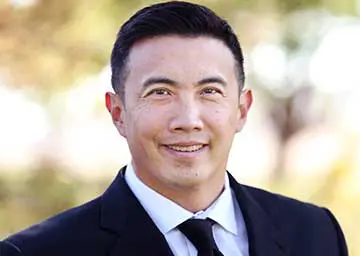Neck pain is a very common complaint. The most prevalent causes of neck pain are neck strains and neck sprains, also called cervical spine strains and sprains. The pain can be mild or severe and not always appear until hours after the injury occurs or even the next day. If left untreated, the resultant pain can be severe and even temporarily disabling to a patient’s everyday activities. That is why you should see one of the experienced orthopedic specialists at Advanced Orthopedics in Denver, Parker, or Aurora, Colorado, for a full evaluation before the pain worsens.
OVERVIEW
Neck pain ranks in the top 5 disorders in the United States, with 10-20% of people reporting incidents of neck pain—women more often than men. The risk of neck pain generally increases with age. People often consider a neck sprain and strain as the same thing, even using the terms interchangeably. Though similar symptomatically, they are different in the soft tissues they affect. A neck strain is an injury to the muscle or tendon that generally occurs when the neck muscle or tendon stretches too far and tears. A neck sprain is an injury to the ligaments in the neck. Both can impact one’s physical, social, and mental well-being.
ABOUT THE NECK
The seven bones of the spinal column in your neck are called cervical vertebrae. They are connected by an intricate system of soft tissues—muscles, tendons, and ligaments that support the head and enable it to move in a wide range. The neck, or cervical spine, is the most mobile segment of the spine, but this mobility comes at the cost of stability, making it susceptible to injuries such as neck strain and neck sprain.
WHAT ARE NECK SPRAINS AND STRAINS?
A neck sprain primarily affects the ligaments in the neck but may also affect other elements of the soft tissue like cartilage and blood vessels of bursae (fluid-filled membranes that cushion the joints). One of the most common examples would be whiplash, which is a condition that happens when sudden movement changes force the neck and upper spine to move in ways that cause injury. Because whiplash can have various effects, a grading system is as follows:
- Grade 0—no injury
- Grade 1—pain only
- Grade 2—pain plus signs of injury
- Grade 3—pain plus signs of injury and neurological effects
- Grade 4—severe pain and signs of serious or dangerous effects
A neck strain is an injury that primarily affects the muscles and tendons of the neck. Neck strains can be classified from Grade 1 to Grade 3:
- Grade 1 is a mild strain with partial tearing. Pain is typically mild.
- Grade 2 is a moderate strain where more muscle fibers are torn. May experience some muscle weakness as well as mild to moderate pain.
- Grade 3 is the most severe strain. The muscle is completely torn, and the pain is severe.
CAUSES
Other than whiplash, neck sprains and strains can be closely related to one’s lifestyle.
Example include:
- Poor posture
- Lifting a heavy object
- Carrying a heavy object on one side of the body
- Sleeping with a pillow that is too high or firm
- Falling
- Extended periods in uncomfortable positions, such as cradling a phone with the neck
- Sitting in a chair that offers no support
- Working at an ill-designed computer station
- Biking
SYMPTOMS
Neck sprain:
- Neck pain and stiffness
- Decreased range of motion
- Headache in the back of the head
- Upper back pain
- Shoulder pain
- Dizziness
- Numbness in hands and arms
- Tingling or weakness in arms
- Ringing ears
- Difficulty sleeping
Neck strain:
- Stiff neck
- Decreased range of motion
- Back pain
- Muscle spasms
- Difficulty performing everyday tasks
- Aching or throbbing pain
- Knife-like pain
- Pain felt in the back of the neck, back of the head, upper back, and/or shoulder
NON-SURGICAL TREATMENTS
All neck sprains or strains are generally treated in a similar manner:
- Ice to reduce inflammation
- Moist heat
- Massaging the tender area
- Cervical neck traction
- Soft collar around the neck
- Ultrasound therapy
- Physical therapy
- Pain relievers such as aspirin, acetaminophen, ibuprofen, or naproxen can help reduce pain and swelling
- Stronger medications may be prescribed temporarily
- Interventional pain management treatments such as cervical epidural steroid injections, transforaminal epidural steroid injections, spinal cord stimulation (SCS), and radiofrequency ablation (RFA). These treatments will be explained in detail by one’s orthopedic specialist
WHEN IS SURGERY INDICATED?
It is quite rare for neck surgery to be recommended for neck sprains or neck strains. However, every patient and every situation is unique, so it is hard to make a blanket statement about when and if surgery is necessary. There are cases where surgery might be recommended as the best alternative, but it is key to determine the exact source of the neck pain first.
GETTING THE RIGHT DIAGNOSIS. GETTING THE RIGHT DOCTOR.
Although the symptoms described above might present themselves, it does not necessarily mean that the patient has a neck sprain or neck strain. That’s why, rather than trying to self-diagnose, patients should consult an orthopedic specialist who is an expert at diagnosing such conditions and at identifying and ruling out other conditions with similar symptoms. At Advanced Orthopedics in Denver, Parker, or Aurora, Colorado, you can expect real answers to your pain. Their experienced and highly-trained orthopedic doctors will begin by conducting a detailed physical and neurological examination. A neck sprain or strain cannot be seen on an X-ray since it involves soft tissues, but your doctor may order one to rule out any more serious sources of neck pain, such as a spinal fracture, dislocation, or arthritis. In certain cases, other imaging, such as a CT Scan or MRI, may be ordered to provide more information. You can expect the professionals at Advanced Orthopedics to be thorough in every way so that the individualized treatment plan they create for you will get you out of pain and back to enjoying your life. Schedule an appointment today.









